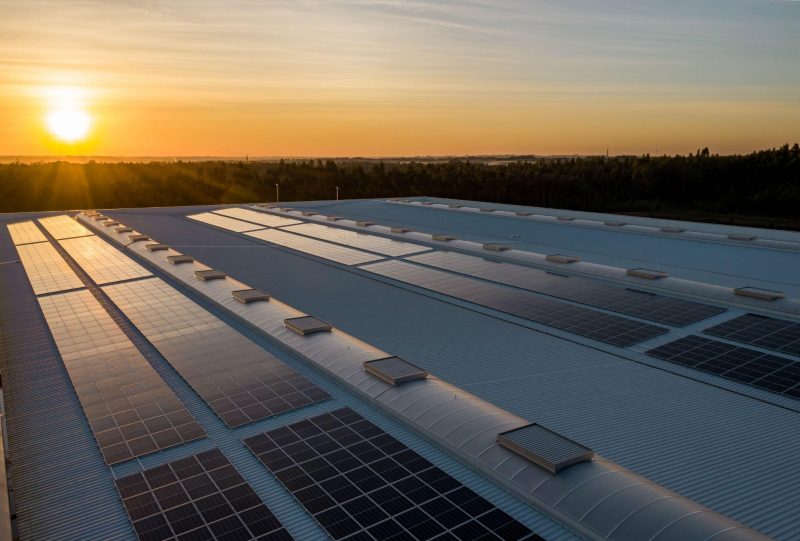Technology has many benefits to everyday life, but it can also benefit the environment. Additionally, innovative companies are coming up with new green technologies every day to help fight climate change, while other forms of technology are being used to reduce our carbon footprints at an individual level. This article will discuss how technology can help reduce our carbon footprint and make it easier for you to go green at home and in the workplace.
Minimizes Travel
While no one wants to be stuck at home too often, technology can help minimize our carbon footprint by making it less necessary to travel. While people travel for all sorts of reasons, one thing many people have in common is that they commute to work in some form. Whether they take the bus, a train, or drive, transportation is one major contributing factor to climate change. However, with technology, people can now start working remotely and reduce the need for vehicles on the road.
Technology, such as computers, the internet, and apps, allows people to work from anywhere in the world, but especially at home, where they won’t need a car to make it to the office. Remote teams can communicate in various ways without the need to be together in an office, making it easier to collaborate. Additionally, remote work can help employers attract and retain millennial workers who want to reduce their carbon footprint.
Reduces Paper Use
Everyone uses paper, especially businesses. For example, companies might keep their business insurance, tax forms, employee paperwork, and other legal documents in storage, so they have paper backups of everything even if they’re keeping their data in the cloud. However, technology can reduce and even eliminate the need for paper. Now, students can take their laptops and tablets to class and type up their notes faster than they could write them. Additionally, businesses can do everything from creating to storing important documents and files online without the need for hardcopy backups.
Consumers can even start to use less paper, thanks to the many apps that can act as your calendars, notepads, and even grocery lists.
Saves Energy
The technology uses energy, but it can also help us capture, store, and use that energy to reduce pressure on the electrical grid. For example, you can use solar panels in your art studio or at home to save energy from the grid. Smart homes can also help you reduce your energy usage by allowing you to turn off the lights remotely or adjust your thermostat for the ideal temperature when you’re home.
Savvy homeowners can also invest in a battery wall that allows them to store energy to use at a later date to prevent blackouts and brownouts from impacting their ability to cool their homes in the summer.
Solar Panels
Solar panels convert sunlight into usable energy. With solar panels, you don’t have to rely on the grid, which can reduce your electrical bill and carbon footprint simultaneously. The clean energy derived from the sun can help combat greenhouse gas emissions and reduce our dependence on fossil fuels, such as natural gas and coal.
Electric Vehicles
US president Joe Biden recently set a target to make half of the cars on the road electric by the year 2030. While this may seem ambitious, more people are becoming interested in fully-electric vehicles that can reduce their carbon footprint. EVs go through rigorous equipment testing to ensure their batteries will last and won’t be affected by cold or hot weather while ensuring they’ll be able to hold a charge. You can expect more EVs soon as automakers like Ford, Audi, Mercedes, and more are starting to make fully electric lines of vehicles.
Many people believe EVs are the future of transportation, so while many Americans can’t yet afford them, their prices will start to come down soon to make it easier for everyone to purchase an EV. Additionally, automakers are now coming out with EVs that you can use to power entire buildings. Not only can you charge your car at home, but you can take the energy within your vehicle and use it to power your home in case of a power outage.
Off-Peak Electricity Usage
Technology makes it easy for homeowners and business owners to use electricity when it’s off-peak. These off-peak hours put less pressure on the grid to reduce your carbon footprint and allow you to charge your EV and other devices at times that are cheaper and better for the environment. Through apps, you can track your energy usage and work with your electrical company to get the best deals on off-peak hours.
Climate Research
Artificial intelligence can aid in climate research by recognizing patterns and making predictions. Scientists can use this technology to predict climate change and protect the environment. For example, Microsoft recently funded a project that examines how hurricanes impact forests. The project used photo analysis done by artificial intelligence to identify trees that survived a hurricane.
Carbon Capture
When carbon-based products, such as trees, oil, and coal, are destroyed, CO2 is released into the atmosphere. Carbon capture pulls the CO2 back from the air. Carbon capture plants are typically located near power plants to suck the CO2 back in from the air due to burning fossil fuels. However, other carbon capture technologies can remove carbon from the atmosphere.
Meat Alternatives
We can’t force everyone in the world to go vegan, but we can create delicious meat alternatives that may help some people eat less beef. Ultimately, producing meat and dairy takes many resources, which can have major consequences for the planet. Ultimately, meat production is not sustainable because it takes up land and water we could be using for other things, and raising cattle takes years.
However, meat alternatives are derived from sustainable products, such as vegetables, which are easier to grow and require less land. Additionally, the resources needed for meal alternatives regrow faster, making them more sustainable.
Technology and Sustainability
There’s one major problem with the argument that technology reduces our carbon footprints: technology requires power, typically in the form of electricity. However, many companies are finding ways to become greener by reducing the amount of power they use to create products. Some companies have even started using solar panels to create their energy and reduce their impact on the grid and environment.
If you’re interested in finding more ways technology can reduce your carbon footprint, you can research how some of your favorite brands are taking action and fighting climate change.









